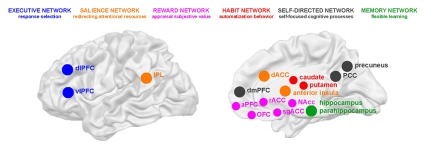A systematic review of more than 100 task-related neuroimaging studies published since 2010 confirmed the importance of six neural networks implicated in drug-seeking and taking behaviors that are the hallmark of drug addiction. The study suggests that brain activity is not simply too high or low in people who are addicted to drugs, but behaves differently to drug and non-drug stimuli. For example, during exposure to drug cues, participants with addiction had increased engagement of the brain networks— underlying decision-making, inhibitory control, and social-emotional processing. However, there was a blunted response during non-drug related tasks.
The work was funded by NIDA as well as the Netherlands Organization for Scientific Research.
